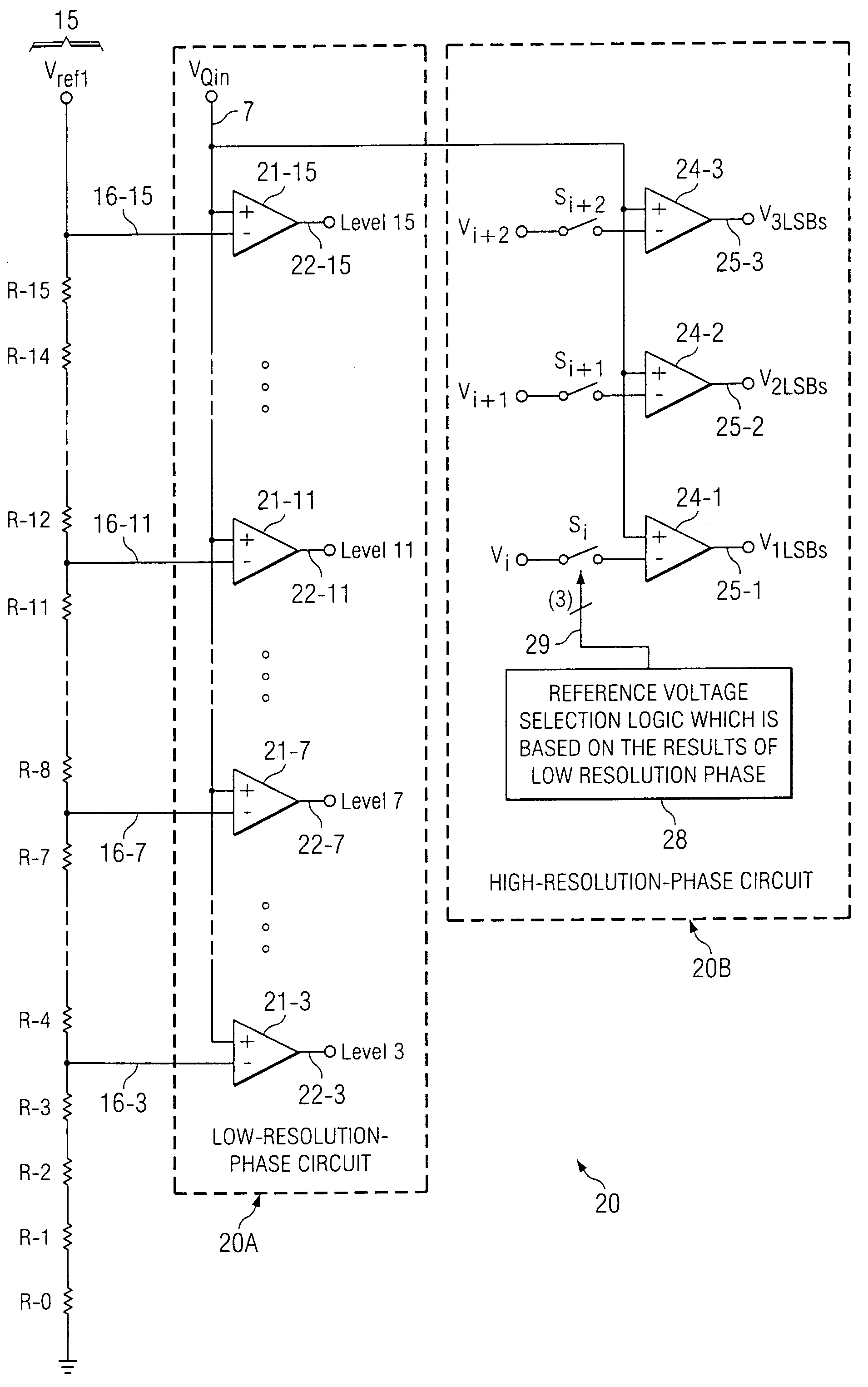Input tracking high-level multibit quantizer for delta-sigma ADC
a multi-level, input tracking technology, applied in the field of multi-level quantizers, can solve the problems of insufficient to overcome the above mentioned shortcomings, insufficient delay requirement, serious limit the practical options for the topology of multi-level quantizers, etc., to achieve small internal integrator output signal swing, reduce chip area, and reduce power
- Summary
- Abstract
- Description
- Claims
- Application Information
AI Technical Summary
Benefits of technology
Problems solved by technology
Method used
Image
Examples
Embodiment Construction
[0029]A generalized diagram of a 16-level quantizer according to the present invention and its timing diagram are shown in FIGS. 3A and 4, respectively. Referring to FIG. 3A, two-phase multilevel quantizer 20 includes a resistor string 15A, a low-resolution-phase circuit 20A, and a high-resolution-phase circuit 20B. Resistor string 15A includes, for example, 16 precision resistors R-0,1,2 . . . 15 coupled between a reference voltage Vref1 and ground. Four of the tap points, labeled 16-3, 16-7, 16-11, and 16-15 are coupled to the (−) inputs of four comparators 21-3, 21-7, 21-11, and 21-15, respectively, of low-resolution-phase circuit 20A. Tap point 16-3 is connected to the junction between resistors R-3 and R-4. Similarly, tap point 16-7 is connected to the junction between string resistors R-7 and R-8, tap point 16-11 is connected to the junction between string resistors R-11 and R-12, and tap point 16-15 is connected to Vref1.
[0030]The (+) inputs of comparators 21-3, 21-7, 21 -11,...
PUM
 Login to View More
Login to View More Abstract
Description
Claims
Application Information
 Login to View More
Login to View More - R&D
- Intellectual Property
- Life Sciences
- Materials
- Tech Scout
- Unparalleled Data Quality
- Higher Quality Content
- 60% Fewer Hallucinations
Browse by: Latest US Patents, China's latest patents, Technical Efficacy Thesaurus, Application Domain, Technology Topic, Popular Technical Reports.
© 2025 PatSnap. All rights reserved.Legal|Privacy policy|Modern Slavery Act Transparency Statement|Sitemap|About US| Contact US: help@patsnap.com



